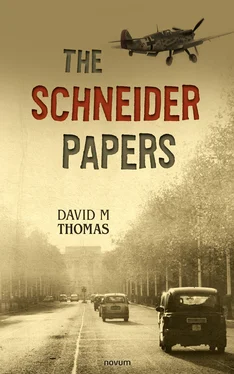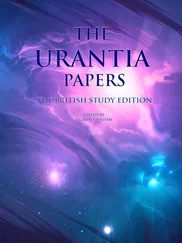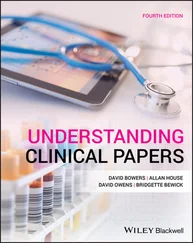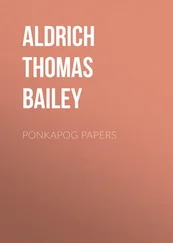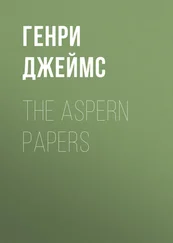2 Commercial Committee (KA) which concerns itself primarily with financial, accounting, sales, purchasing and economic political problems. The full committee consists of about 20 members, including, in addition to Vorsand members, the heads of Sales Combines and other administrative agencies.
3 Mixed Committees coordination between the Technical and Commercial Committees was achieved through special groups that drew their personnel from both fields. The more important of these were the Chemical Committee, the Dyestuff Committee, and the Pharmaceutical Main Conference Committee.
The numerous IG plants are operated on the so-called leadership principle. A major unit is usually under the supervision of an individual Vorsand member, though in some instances one member is responsible for more than one unit, while in others a diversion of responsibility prevailed within the plant, according to production.
Unity in policies of management is achieved by grouping the plants geographically and also in accordance with the character of production in the following way:
1 The Works Combine constitutes the basis for geographical coordination of IG plants. The four original combines are the Upper Rhine, the Main Valley, the Lower Rhine and Central Germany. In 1929 a fifth, called Works Combine Berlin, was added. The Works Combine coordinates such matters as overall administration, transportation, storage, etc., in their respective areas.
2 The Sparton constitutes a means of coordinating IG production facilities on the basis of related products. Thus Sparte I includes nitrogen, synthetic fuels, lubricants and coal. Sparte II embraced dyestuffs and their intermediates, light metals, chemicals and pharmaceuticals. Sparte III includes synthetic fibres, cellulose and cellophane, and photographic materials.
3 Sales Combines were established to handle the marketing of the four principal categories of IG products. Each combine is headed by a Vorsand member, with deputies. There are Sales Combine Dyestuff, Sales Combine Chemicals, Sales Combine Pharmaceuticals and Sales Combine Agfa (photographic materials, artificial fibres, etc.)
4 The Central Finance Administration (ZEFI) was established in 1927 in connection with its location on Unter Den Linden, Berlin NW7. It is known internally as ‘NW7’, its postal district code. In 1933 was added the Economic Research Department (WIPO), and a central office for armed forces liaison called Vermittlungsstelle W, – ‘Wehrmacht Switchboard’ We have little information on the full function of NW7.
He stopped reading.
Cartwright, with his hands on its armrests, pushed himself up slowly from the captain’s chair and stood over the open report. He looked out of his glass-paned office; the day had moved on without him. The ballroom was full, his beavering DCs at work.
He ran the fingers on his right hand through his hair. ‘God, this company is a government in action, it’s better organised than the British Army!’ he exclaimed out loud. Cartwright sighed, locked his hands behind his back and paced back and forth, a frustrated beast trapped in a greenhouse cage. He now realised this truly massive industrial combine was now under the control of Hitler, and a serious threat to national security.
He reluctantly returned to his chair, and continued reading; he had to read it all. Cartwright then flicked through the financials: capital and reserves to include; called up share capital, share premium account, profit and loss, shareholders funds, then finance charges to include foreign exchange gains/losses, amortisation of development costs and something called Impairment of intangible fixed assets … but thin, he thought, and virtually all with the asterisk pointing to a common footnote: estimated/best guess … he was not a finance man, but it was obvious that they did not know too much about the flow of money through the body corporate of I.G. Farbenindustrie A.G.
Later, he organised an early evening meeting with Sir Harry McGowan, the Chairman of Imperial Chemical Industries. Meanwhile at four o’clock he met with the IRS financial section external authors of the IG report. A three man team, one from the Bank of England, one from HM Treasury, and a Christopher Matthews of Lloyds Bank International.
‘So, let me recap,’ and he looked down at his scribbled notes. ‘I’ve got IG is Germany’s greatest source of foreign exchange through the export of chemical products and revenues from royalty payments and patent sales. Revenue, you said estimated,’ he emphasised the ‘estimated,’ and looked accusingly at the trio, ‘is half a billion Reichsmarks,’ and after a moment, ‘give or take another possible half a billion,’ Cartwright added in his best sarcastic voice.
‘Major Cartwright, we have very little information over the flow of funds between subsidiaries. There is no real group consolidation as we know it,’ replied the indignant Bank of England economist, raising his voice in ending the reply, in his and his department’s defence.
‘Well, there is one, obviously, it’s just we have no access to it,’ said the HM Treasury man, in a quiet, reasoned voice.
‘Right. So we are clear that IG is a very profitable business.’ The three economists nodded their heads in unison. ‘What I am trying to get clear in my head is the ability, the flexibility, to use surplus funds for nefarious activities.’
‘What does that actually mean, Major Cartwright?’ Inquired Matthews. This was the first time Christopher Matthews, the junior of the three, had spoken.
Cartwright looked at Matthews and said slowly, with an exaggerated patient voice: ‘Is IG Farben splashing money about internationally to ensure the supply and import for internal storage of essential raw materials for build-up to war? That’s number one, and two, if there is indeed a policy of internal storage, how much annual import surplus is deemed required and which particular materials are deemed strategically necessary? That’s what I mean and that’s what I am interested in!’
The three economists looked at each other in astonishment. Matthews was the first to speak. ‘Major Cartwright, we do not have access to sensitive if not secret inter- and intra- commercial trade agreements between Group companies and third parties, internally in Germany or internationally, let alone access to the German Ministry of Economics,’ and then added, after a pause, ‘sorry.’
Christopher Matthews thought that Cartwright was about to blow a fuse. But Cartwright held himself in check, he responded in a voice reminiscent of a school teacher patiently explaining the obvious solution: ‘First you identify where IG Farben funds are going around the world. From that you move to identify foreign companies supplying IG Farben and therefore Germany. It then follows that the raw product can be identified. We can then check foreign company export ship manifests and thus enlighten ourselves regards volumes.’ He held up both arms, ‘Easy.’
The three economists were silent, they had nothing to say, each surprised at Cartwright’s naivety. Was it naivety or Cartwright’s determination to push the investigative envelope wider? Pull out all the stops! Make ‘em work for their money!
Matthews broke the impasse.
‘We did look at foreign company shareholding in IG. I refer you to the International Shareholder Section in Annex ‘J’.’ Matthews began to flick through pages in his ring-folder.
‘Yes, alright, I haven’t read that, yet,’ interrupted an irritated Cartwright, knowing that would be in the full report, the IRS/G.3, which came in a cardboard box now lying on the floor in the greenhouse, under the teleprinter table.
‘This then implies cooperation, commercially, and possibly of ongoing technical research sharing.’ Matthews continued, ‘About 6% of IG stock is owned by four international business-related companies.’ He found the section. ‘We have Francolor of France, with 51% of its stock owned by IG by the way; Solvay et Cie of Belgium; DuPont de Nemours of Delaware; and Imperial Chemicals Industries of this country.’ Matthews looked up at Cartwright. ‘And of course each of these combines have various trade, sales and patent licensing agreements with IG. It is therefore in their shareholders interest to cooperate with IG. It’s actually a gordian knot of international commercial self-interest.’
Читать дальше
